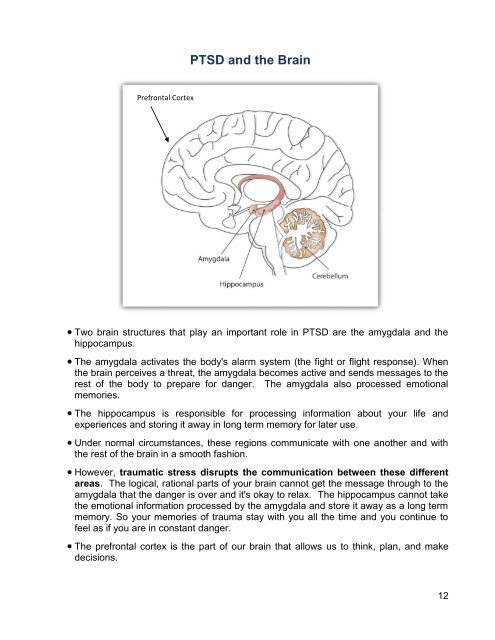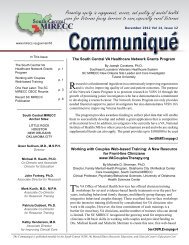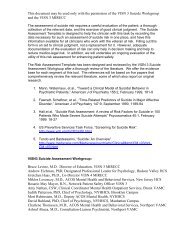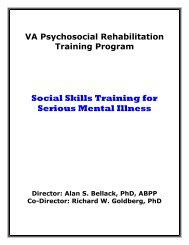PTSD Recovery Group-Client Manual
PTSD Recovery Group-Client Manual
PTSD Recovery Group-Client Manual
Create successful ePaper yourself
Turn your PDF publications into a flip-book with our unique Google optimized e-Paper software.
Prefrontal Cortex<br />
<strong>PTSD</strong> and the Brain<br />
Two brain structures that play an important role in <strong>PTSD</strong> are the amygdala and the<br />
hippocampus.<br />
The amygdala activates the body's alarm system (the fight or flight response). When<br />
the brain perceives a threat, the amygdala becomes active and sends messages to the<br />
rest of the body to prepare for danger. The amygdala also processed emotional<br />
memories.<br />
The hippocampus is responsible for processing information about your life and<br />
experiences and storing it away in long term memory for later use.<br />
Under normal circumstances, these regions communicate with one another and with<br />
the rest of the brain in a smooth fashion.<br />
However, traumatic stress disrupts the communication between these different<br />
areas. The logical, rational parts of your brain cannot get the message through to the<br />
amygdala that the danger is over and it's okay to relax. The hippocampus cannot take<br />
the emotional information processed by the amygdala and store it away as a long term<br />
memory. So your memories of trauma stay with you all the time and you continue to<br />
feel as if you are in constant danger.<br />
The prefrontal cortex is the part of our brain that allows us to think, plan, and make<br />
decisions.<br />
12






